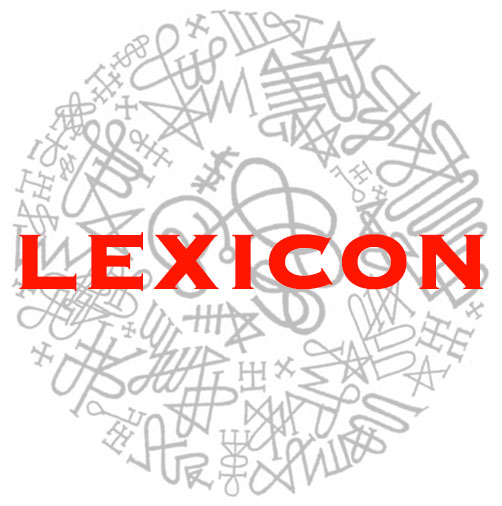RADIATING AFFECTION.
IMAGO MENTIS – Theosophical Thought-form drawings
By Barry William Hale
“To paint in the earth's dull colours the forms clothed in the living light of other worlds is a hard and thankless task: so much the more gratitude is due to those who have attempted it. They needed coloured fire, and had only ground earths”
Thought Forms a joint work between Annie Besant [ 1847 - 1933 ] and Charles Webster Leadbeater [1854 – 1934 ]two prominent exponents of the Theosophical Society. Part of the treatise appeared in an article for Lucifer [now the Theosophical Review].
“leading science beyond the borderland of ether into the astral world. The boundaries between the animate and inanimate matter are broken down.”
According to Besant Thought Forms are classified under three categories or classes

PLATE W. MUSIC OF WAGNER
1. The first category “That which takes the image of the thinker”
Examples of this category of thought-forms include such phenomena as when an apparition or astral image of an individual appears at a location other than the physical individual. Such projections must have sufficient strength to materialise itself - “ that is to draw round itself temporarily a certain amount of physical matter.” The thought that generates such a projection is necessarily a strong one, and employs a larger portion of the matter of the mental body, the form is small and compressed when it leaves the thinker, it draws round it with a considerable amount of astral mater, and then usually expands to life size when it appears at it destination.
Tales of the translocation of Spiritual Masters being in two locations at once might be considered under this category

PLATE G. MUSIC OF GOUNOD
2. The Second Category of Thought-forms are “The image of some material object”
This category of Thought-forms are described as tiny images of things formed within the mental body. As an artist conceiving of an artwork creates a vivid picture of the image prior to the execution of the artwork, then this projection is externalised in its production.
The Novelist serves as another example, the author builds images of the characters to occupy the story and fortifies this with characteristics, built up as mental images they can be pulled into different relationships with the other characters whose interplay dictate the narrative. The proposition is that these mental images have a life of there own independent of the author and that they have an actual existence with an objective existence that may be perceived by a clairvoyant, and may be interacted with or rearranged by someone independent to the author themselves. According to this hypothesis this classification of thought-forms can become ensouled by nature spirits. This second category of thought-forms might include Occult Egregores and Tulpas which gaining sufficient energy materialise themselves and become interdependent of their creators.

PLATE M. MUSIC OF MENDELSSOHN
3. The third classification of Thought-forms is that which “takes on a form entirely on its own”.
This classification invariably manifest themselves upon the astral plane and the vast majority of them are the expressions of feelings as well as thoughts. Thought-forms directed to an individual has a marked effect, these effects are reproduced in the aura of the recipient, increasing the result or repelling from it. A thought of an emotion such as love or hatred, create a thought-form that goes to the person it is connected to. A feeling of protection or an attachment to a cherished object remains in the aura shielding or as a protective agency. An evil thought projected with a malefic intent strikes at it target and can only be rebounded. Flung back with all of its own energy backwards along magnetic lines of least resistance back to strike its projector. Having matter in ones astral and mental bodies similar to that of the thought-form generated, this is the key to sending curses back. Besent's idea was that curses and blessings come home to roost.

THE LOGOS PERVADING ALL
Another point mentioned is that every thought-form illustrated in Besent treatise are drawn from life. They are not imaginary forms, prepared by some dreamer that thinks they ought appear, they are the representations of thought-forms that have been thrown off by ordinary people. Under the controlled conditions of the Thought-form experiments; either reproduced with all possible care by those who have seen them, or with meticulous attention paid to the descriptions given to the artist employed to illustrate them.
Besent describes the parameters to these experiments, the conditions as thus; the experiments are performed at a fixed time, each day at a prescribed hour. In some cases the thought-forms were perceived by the Transmitter, but in all cases were perceived by the recipient, who immediately made rough sketches of what had been supplied.
The treatise on Thought-forms provide a conceptual framework which influenced modern art movement such as 'Abstraction' with noteable proponents as Kandinsky, and leave us with a catalogue of interesting artistic documentation of rigorious psychical experiments.

THE LOGOS AS MANIFESTED IN MAN
See full treatise here
HELPFUL THOUGHTS

HELPFUL THOUGHTS

HELPFUL THOUGHTS

HELPFUL THOUGHTS

HELPFUL THOUGHTS

THE LOGOS PERVADING ALL

HELPFUL THOUGHTS

IN THE SIX DIRECTIONS

AN INTELLECTUAL CONCEPTION OF COSMIC ORDER

AN ASPIRATION TO ENFOLD ALL

SYMPATHY AND LOVE FOR ALL

ON MEETING A FRIEND

AT A FUNERAL

AT A STREET ACCIDENT

THE GAMBLERS

ON THE FIRST NIGHT

AT A SHIPWRECK

GREED FOR DRINK

SELFISH GREED

SUDDEN FRIGHT

ANGRY JEALOUSY

WATCHFUL JEALOUSY

EXPLOSIVE ANGER

MURDEROUS RAGE

SELFISH AMBITION

HIGH AMBITION

THE INTENTION TO KNOW

VAGUE SYMPATHY

RESPONSE TO DEVOTION

SELF-RENUNCIATION

UPWARD RUSH OF DEVOTION

VAGUE RELIGIOUS FEELING

GRASPING ANIMAL AFFECTION

PEACE AND PROTECTION

DEFINITE AFFECTION

VAGUE SELFISH AFFECTION

VAGUE PURE AFFECTION

HELPFUL THOUGHTS

INTELLECTUAL ASPIRATION

VAGUE INTELLECTUAL PLEASURE


